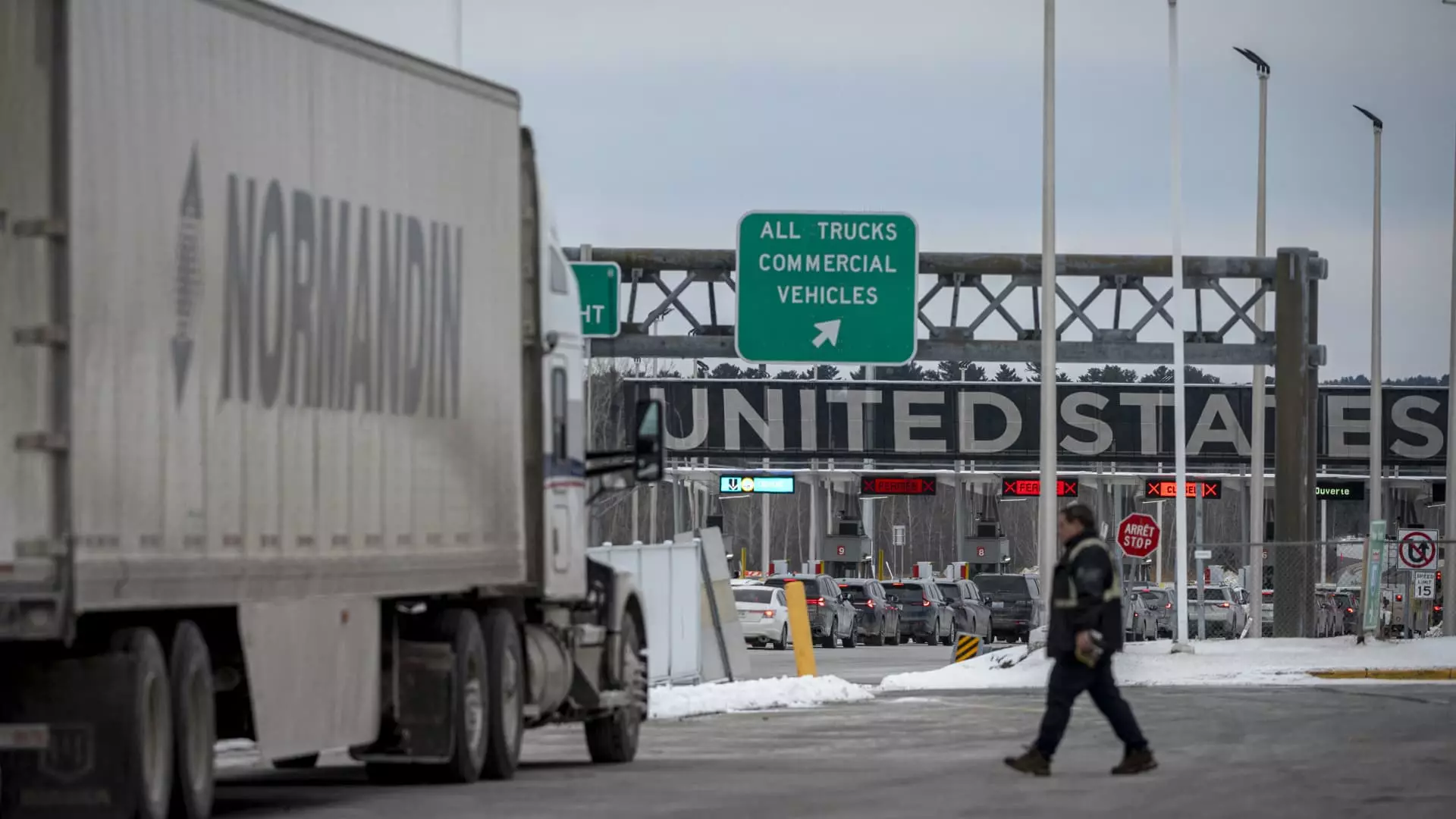The recent decision by President Donald Trump to impose tariffs on key U.S. trading partners has ignited a wave of concern among economists about the long-term consequences for consumers and the economy as a whole. While intended to protect domestic industries, these tariffs may ultimately exacerbate financial burdens for American households, undermining the very objectives they hope to achieve. This article delves into the potential ramifications of these tariffs, particularly focusing on inflation and interest rates, while also exploring the larger economic context surrounding such protective measures.
On Saturday, President Trump signed orders instituting a hefty 25% tariff on imports from Canada and Mexico and a 10% tariff on goods from China. This bold move is poised to impact various sectors, from manufacturing to agriculture, as price hikes are expected to trickle down to consumers. Economists warn that these tariffs, if they remain in place, will create upward pressure on inflation during a precarious economic period. The critical question is how these tariffs will influence the Federal Reserve’s approach to interest rates.
While tariffs are often perceived as a method to bolster domestic production, they can inadvertently lead to heightened costs for consumers. As businesses face increased expenses for imported goods, these costs frequently lead to price increases on shelves. Economists predict that the inflation rate could rise substantially, possibly by as much as one percentage point by 2026, depending on how the tariffs are implemented and maintained.
The Federal Reserve (Fed) plays a pivotal role in managing inflation and stabilizing the economy through its monetary policy. With borrowing costs influenced by the Fed’s benchmark interest rate, the increasing inflation pressure from tariffs complicates the Fed’s roadmap for potential interest rate cuts. A noted economist, Paul Ashworth, has highlighted that current conditions may inhibit the Fed’s ability to decrease rates in the foreseeable future.
In fact, based on predictions, the Fed might be forced to keep interest rates higher for an extended period if inflation continues to exceed desirable levels. This situation could create a feedback loop, where higher borrowing costs lead to reduced consumer spending, which, in turn, could stifle economic growth. Economists have expressed that the window for the Fed to resume cuts has likely shut for at least a year, underscoring the significant tension between mitigating inflation and fostering economic advancement.
One of the most challenging aspects of assessing the impact of these tariffs is the inherent uncertainty surrounding their implementation. For instance, President Trump announced a temporary pause on the 25% tariff on Mexico due to an agreement with Mexican authorities to enhance border security. Such fluidity in policy execution introduces an unpredictable element into the economic equation, making projections about inflation and interest rates more difficult.
As noted by Susan Collins, president of the Federal Reserve Bank of Boston, the unpredictability in policy decisions adds layers of complexity to economic forecasting. It emphasizes that while economists strive to provide guidance based on available data, changes in trade policies can quickly shift the landscape.
The anticipated impact of these tariffs extends beyond immediate inflationary effects. Projections from J.P. Morgan indicate a potential decline in U.S. gross domestic product (GDP) by up to 1 percentage point through 2026. The consequence of reduced economic growth could overshadow the inflationary pressures that tariffs are likely to produce. As businesses grapple with increasing production costs, slower economic growth may force the Fed to reconsider its previous positions on interest rates.
The decision to impose tariffs on Canada, Mexico, and China reflects a broader strategy to insulate domestic industries; however, the potential fallout underscores a complicated interplay of inflation, interest rates, and overall economic health. As the situation continues to evolve, it is crucial for policymakers and consumers alike to stay vigilant about how these economic decisions will shape the landscape in both the short and long term. The balancing act between safeguarding industry and promoting consumer welfare remains a daunting challenge in these tumultuous economic times.

